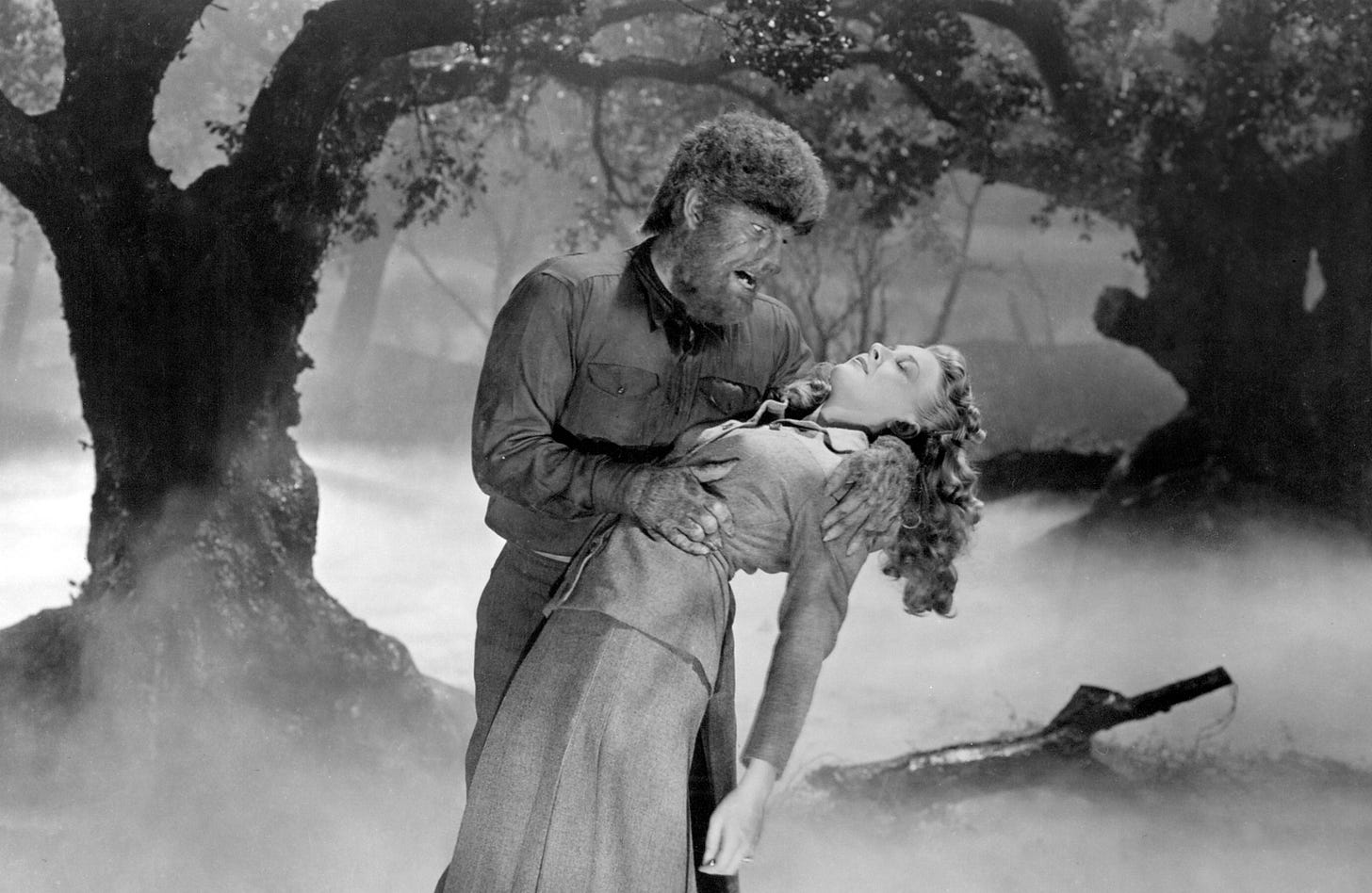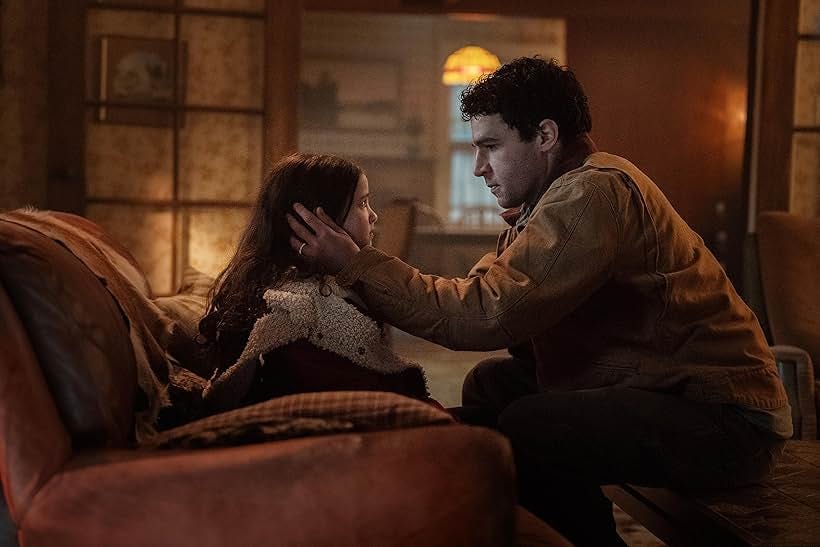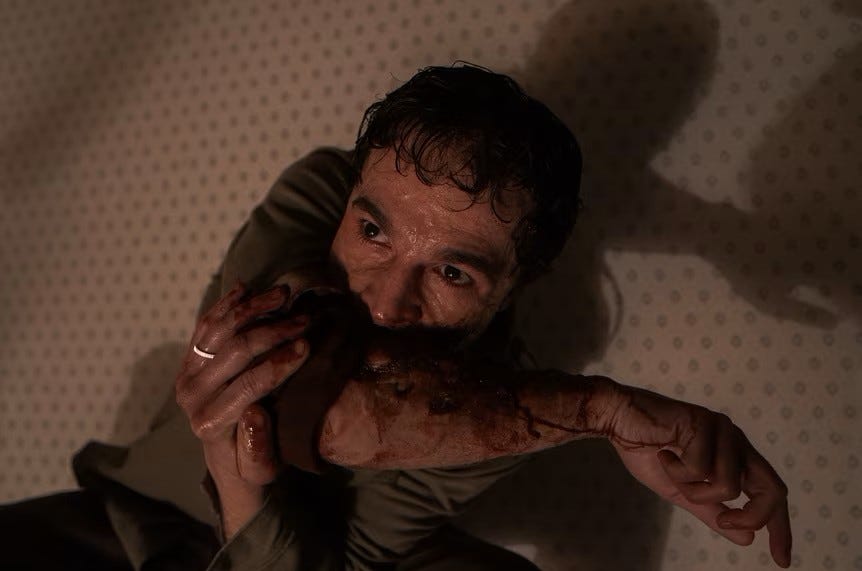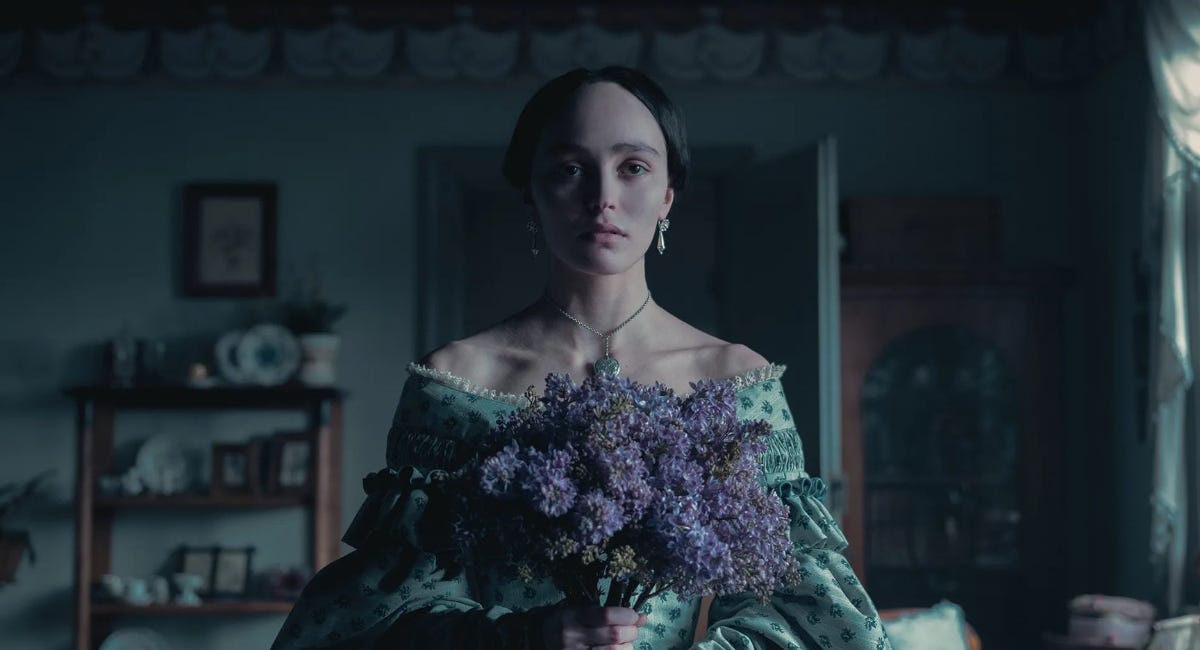Welcome to your Sunday Fluff at The Drip Tray: A weekly treat of fun and fandom to indulge your sweet tooth, like an artsy cappuccino.
Two anticipated vampire and werewolf films dropping within a month of each other? This must be 2005! Nay, we are just in another monster movie cycle that seems to loop back every 20 years or so. With Robert Eggers’ Nosferatu (2024) having just been released in Australia and now Leigh Whannell’s Wolf Man (2025) hitting our screens, it seems like a timely reminder that Hollywood is running out of ideas (more on that to come). Thankfully, both are welcome adaptations and the latter possesses a great depth with wholesome undertones.
After Universal’s attempt at a “Dark Universe” failed miserably, they seem to trust Whannell with their 21st century updates. Like The Invisible Man (2020), Wolf Man is more of a reimagining than a remake of the classic The Wolf Man (1941). The original is arguably the worst of the best from that era – not to undermine the legendary makeup by Jack Pierce – and who better than the mind behind Saw (2004) and Insidious (2010) to make an almost comical concept scary? Of course, this isn’t the first reboot – Joe Johnston’s The Wolfman (2010) was a gory period piece starring Benicio del Toro as Larry Talbot, with supporting roles from Sir Anthony Hopkins and Emily Blunt – but it might be the best.
Whannell, who directed and co-wrote the film with his wife Corbett Tuck, takes the core idea and key plot points of the original and presents an intimate story around them for modern audiences. We get the traditional tale of a man who is attacked by a wolfish beast and infected – which feels like the right word in this instance – with the same curse. But what ensues is much more than a run-of-the-mill creature feature. For starters, there are no wolves, silver bullets, or severe cases of sundowning brought on by a full moon. In fact, it largely takes place over a single night with a cast of just five characters at an isolated farmhouse.
It follows Blake Lovell, played by Christopher Abbott, returning to his childhood home in the mountains of Oregon, where a fevered man is rumoured to stalk the woods, to collect his recently deceased father’s things. Blake is joined by his wife Charlotte, played by Julia Garner, and daughter Ginger (a nod to Ginger Snaps, perhaps?), played by Matilda Firth, hoping that the time together will repair their marriage and allow Charlotte to bond with Ginger. The script is believable enough without being complicated by elaborate mythology, relying on local superstition instead of trying to explain the events with expositional dialogue.
After picking up his old neighbour for directions, Blake crashes the car and they narrowly escape the creature before barricading themselves in his father’s house. Talk about an inciting incident! Blake begins showing signs of illness – agitation, profuse sweating, extremely heightened senses; you know, the usual – and reveals to Charlotte that he was attacked by the titular character in the struggle. What follows is a game of cat and mouse between the family and the werewolf (if you can call it that), then Blake and his wife and daughter. All the while the stakes are raised by the ticking clock of his “fever,” which is when the real terror begins.
It’s established early on that this film is about family. From the opening sequence of a young Blake hunting with his disciplined father, we learn that he grows up to inherit his own curse in the form of helicopter parenting. The overbearing presence of his father, who only intended to protect his son from the natural dangers of life, lingers long after Blake has removed himself from the situation. This concept of a hereditary love language, or resistance to it, is best summarised in Blake’s memorable line, “Sometimes dads are so scared of their kids getting scarred that they become the thing that scars them.”
The first scene in which we see Blake as an adult, 30 years later, is walking with Ginger down a busy street and scolding her for getting too close to nearby traffic. Blake has one job: to keep his daughter safe, whose “superpower” is reading minds. Their thing is for Ginger to place her hand on Blake’s forehead and guess what he’s thinking, which is always that he loves his little girl, even when he loses his temper. Foreshadowing, anybody? If you haven’t seen The Wolf Man or The Wolfman, Wolf Man (confusing, I know) uses the famous reveal as an emotional reminder rather than a catalyst for vengeful action.
As for the pacing, the tension is maintained throughout with unpredictable scares and double bluffs. I like how it subverts expectations, similar to The Invisible Man, by showing you where the jump would usually come from and letting you stew in it until you’ve relaxed before it gets you. This is also felt in the mental tug-of-war between Blake and his new animalistic personality. There were plenty of times when I was sure that he was going to attack his own family, but resisted, and others when he did that caught me off-guard. Distrust of a character who we want to root for is used against us to great effect.
One of the most inventive things about this film, however, is how it shows the world from wolf-Blake’s point of view. It’s like a form of night vision in negative with floating particles and muffled, unintelligible voices – just how I imagine a wolf would experience it, but with an internal monologue. The way in which Blake discovers that he has hypersensitive hearing is in itself a scare to some viewers (me included). This also allows the filmmakers to leverage darkness for suspense by showing the audience what the characters can’t see and is particularly effective in a certain basement scene.
I said above how the “Face of the Wolf” is portrayed as a sickness, which I can’t say that I’ve seen before. It’s a good ol’ curse in An American Werewolf in London (1981), considered a blessing in The Howling (1981), and a metaphor for the menstrual cycle in Ginger Snaps (2000). Wolf Man approaches this angle as a body horror with what seems to be mostly practical effects. The grotesque makeup completely transforms Abbott into something to be feared and despised while his actions are those of compassion and valour. At one point, he gnaws at his arm like a frenzied dog before a gnarly Saw homage in the final act.
By the time wolf-Blake has gone full Wolf Man, the film becomes more of a romantic tragedy, like David Cronenberg’s The Fly (1986). Charlotte, who is frosty with Blake and detached from Ginger in the beginning, becomes (just the right amount of) protective of her daughter, but fights for her husband’s recognition. Ginger, dressed in a fleece jacket like a tempting young lamb to a hungry wolf, believes that her father is still in there somewhere. And what conquers all in the face of evil? You guessed it! Love. The colour schemes and meticulous lighting in these sequences are gorgeous, just like that tearjerker ending.
I wasn’t holding my breath for Wolf Man to be anything special, but I’m glad to say that I was pleasantly surprised. On the surface level, it’s very nice to look at. But, as with most films, the best bits are buried underneath. There are strong themes of love and family in this traditional horror setting that convey a sense of tenderness without skimping on the gore. Perhaps we’re in the middle of a monster movie renaissance, especially with Guillermo del Toro’s upcoming Frankenstein adaptation. With entries like these, I’m all for it.
Nosferatu Reflects the Beauty in Darkness
Welcome to your Sunday Fluff at The Drip Tray: A weekly treat of fun and fandom to indulge your sweet tooth, like an artsy cappuccino.








